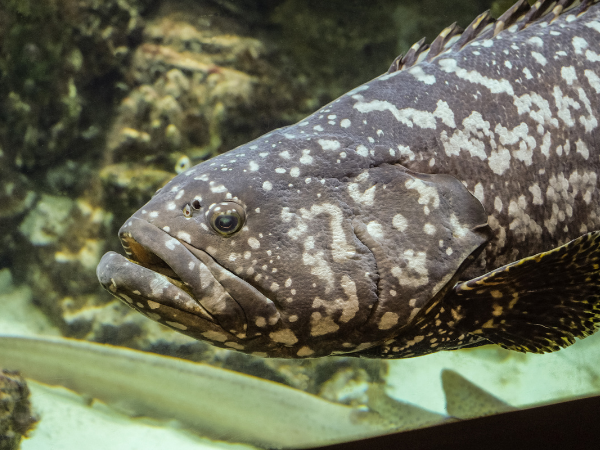By Sandi Schwartz

The goliath grouper is a captivating fish that attracts many dive tourists to Florida. They are brown and yellow with black spots and have huge jaws and tiny eyes, and they open their mouths wide to swallow smaller fish, crabs, and lobsters whole. True to their name, goliath groupers can grow up to 800 pounds and 8 feet long.
Since 1990, keeping goliath grouper has been illegal in Florida. This decision was made to address the overfishing that decimated Florida’s goliath grouper population over the years. They were nearly extinct back in the 1980s.
But now that is all about to change.
At its March meeting, the Florida Fish and Wildlife Conservation Commission (FWC) approved a limited, highly regulated recreational harvest of goliath grouper in state waters beginning Spring 2023. This will allow up to 200 goliath groupers to be recreationally harvested per year, with a maximum of 50 from Everglades National Park, using a permit tag program via a random-draw lottery. There will be a limit of one fish per person per open season with permit and tag, non-transferable. The season will be from March 1 through May 31.
Despite opposition from scientists and divers including a petition with over 66,000 signatures, FWC still approved to lift the ban even though three members of the commission were not in attendance during that vote. The decision is troubling to those who believe too many questions about this species remain unanswered. Has the species really rebounded? Scientists do not know exactly how many goliath grouper are currently in Florida or how long they live. Many believe there is still not enough data to allow for fishing. Plus, goliath groupers are vulnerable to toxic algae; in fact, last summer’s Red Tide killed several goliaths in Tampa Bay. Another concern is that wildlife officials have not explained how they will measure the effect of the new season.
Sierra Club, along with partner organizations, is looking to fund a scientific study on goliath groups to learn more about their status so they can be better protected.
To learn more, please contact Conservation Committee Chair Drew Martin.